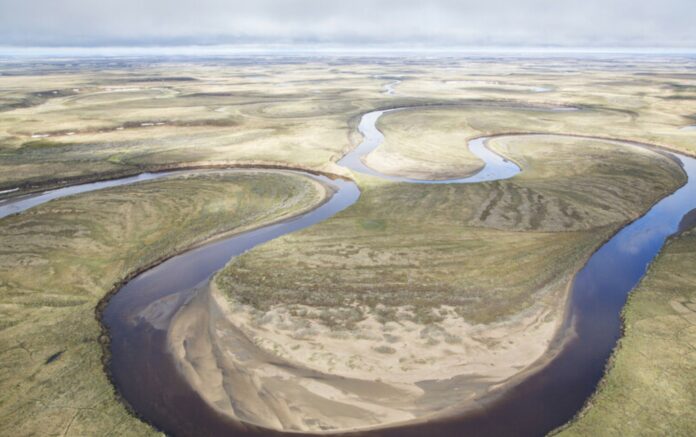The Department of the Interior announced Monday that it has rescinded three policy documents that placed new restrictions on development within the National Petroleum Reserve in Alaska.
The decision, issued by the Bureau of Land Management, reverses guidance from the Biden administration that sought to expand protections for “special areas” of the NPR-A. The Trump administration characterized those previous efforts as overly restrictive and inconsistent with the intent of Congress.
The rescinded documents include:
- A 2024 Request for Information titled Special Areas within the National Petroleum Reserve in Alaska,
- A January 2025 report titled Maximizing Protection in the National Petroleum Reserve – Alaska, and
- A BLM memorandum issued the same month titled Interim Management of Special Areas within the National Petroleum Reserve – Alaska.
According to the Interior Department, those documents were developed without proper consideration for statutory mandates, economic conditions, or the concerns of Alaskans. The administration said the previous approach risked undermining the core purpose of the NPR-A, which Congress designated as a strategic energy reserve.
“Alaska’s resource potential has been held hostage for years by anti-development ideologues,” said Interior Secretary Doug Burgum. “The Trump administration is delivering certainty for industry, opportunity for Alaskans, and real energy security for the American people.”
The decision follows directives outlined in Executive Order 14153 and Secretary’s Order 3422, both titled “Unleashing Alaska’s Extraordinary Resource Potential.” The administration said the move is consistent with broader energy policies that seek to reduce U.S. dependence on foreign oil and prioritize the responsible use of domestic resources.
Alaska’s North Slope communities, where the NPR-A is located, have been vocal in their opposition to expanding special management areas that limit oil and gas development. According to the BLM, the public comments received in response to the 2024 request for information reflected a strong desire to maintain access to economic opportunities tied to resource development.
The Naval Petroleum Reserves Production Act of 1976 directs the Interior Secretary to implement an “expeditious program” of leasing in the reserve, while balancing surface protections. Interior officials argued that the previous administration’s approach undermined that statutory purpose by elevating preservation goals over development.
The policy change is also tied to the Interior Department’s broader push to modernize land management practices in Alaska. In addition to the rescinded documents, the administration is rolling back a 2024 rule that had curtailed leasing in the NPR-A. Officials also pointed to progress on a new Integrated Activity Plan, which they say better reflects the needs of Alaska and the nation’s energy goals.
The NPR-A, spanning 23 million acres on Alaska’s North Slope, is believed to contain significant untapped oil and gas reserves. While some areas have long been designated for conservation, others have been open to leasing, subject to environmental safeguards.

Nothing will be drilled as it is cheaper to drill/frack in other places in the USA and around the world. It’s good eye candy and campaign fodder but not much else.
O we are going to go drill AFF.
‘Oh my God!’ You mean, we’ll be drilling for oil- on 23 million acres of desolate, remote, frozen, uninhabited swampland?!? For energy our country desperately needs?! Oh, the left will be apoplectic!
US dependence on foreign oil? Uh, we’re a net exporter of petroleum products, though an importer of foreign crude to then be refined and exported. We’re only “dependent” on foreign oil because oil from different regions needs to be processed at different facilities, as in a refinery that processes Alaskan crude cannot process oil from the middle east, or vice versa.
But the end result is the same, the US is the world’s largest producer of petroleum. Drilling more wells in Alaska is not economically feasible at current prices. And higher prices would slow the economy, and cause prices at the pump to increase above Trump’s mythical $1.99/gal.
The worry is that in four years President Newsom will reverse everything. To the extent that the Trumpster overreaches on things – and irritates the marginal voters – the potental for the next President to be a Leftist increases. Somehow, Trump and his people must find the “sweet spot” so that someone like JD Vance can become the next President.
35-40% of the high-paying jobs in the petroleum and mining industries go to people who live out of state and spend their money out of state. Maybe if Alaska invested more in education, particularly in science and math as part of Career and Technical education offerings, more Alaskans could reap the benefits of resource extraction. But no, seems like Alaska wants to promote foreign companies and out-of-state jobs.